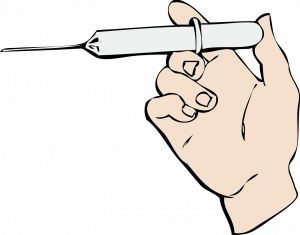 We’ve been living through the coronavirus pandemic for months. As it is a deadly virus, authorities around the world are mobilizing with the situation and trying to contain the outbreak. The spread of this new type of coronavirus, both across Asia and on other continents, has left the planet in a state of alert.
We’ve been living through the coronavirus pandemic for months. As it is a deadly virus, authorities around the world are mobilizing with the situation and trying to contain the outbreak. The spread of this new type of coronavirus, both across Asia and on other continents, has left the planet in a state of alert.
In the urgency of trying to contain the coronavirus pandemic as soon as possible, laboratories around the world are mobilizing in search of an effective vaccine against COVID-19. Fortunately, all this effort was worth it. So much so that several countries are already immunizing their populations.
Millions of people have already rolled up their sleeves to receive the COVID-19 vaccine. But what a lot of people don’t know is why we get the vaccines in the arm.
Vaccine
There is actually a science behind this motive. It is important to note that most, but not all, vaccines are applied to muscle. This is known as an intramuscular injection.
But why is muscle so important? And the location, does it matter? And among them, why the arm muscle called the deltoid at the top of the shoulder?
Reason
Muscle is an excellent place to apply the vaccine because muscle tissue has important immune cells. And these immune cells recognize the antigen, which is a tiny piece of a virus or bacteria introduced by the vaccine, that stimulates an immune response.
In the case of the drug against the new coronavirus, it does not introduce an antigen, but rather a scheme for the production of antigens. Muscle tissue cells pick up these antigens and present them to the lymph nodes.
And injecting the immunizer into muscle tissue keeps the vaccine localized. This allows the immune cells to sound the alarm to other immune cells and then begin to act.
Once the vaccine is recognized by the immune cells in the muscle, they carry the antigen into the lymph vessels. These vessels then transport the immune cells that carry the antigen to the lymph nodes.
Muscle
These lymph nodes are essential components of the immune system. They have more immune cells that recognize the antigens in vaccines and begin the immune process of creating antibodies.
The lymph node clusters are located in the areas close to where the immunizers are injected. For example, several vaccines are introduced into the deltoid because it is close to the lymph nodes located below the armpit. And when vaccines are given in the thighs, the lymph vessels don’t have to travel far to reach the lymph node clumps in the groin.
In addition, muscle tissue tends to keep vaccine reactions localized. Since injecting a vaccine into the deltoid muscle can result in local inflammation or localized pain. That’s why they are usually given in the arm.




